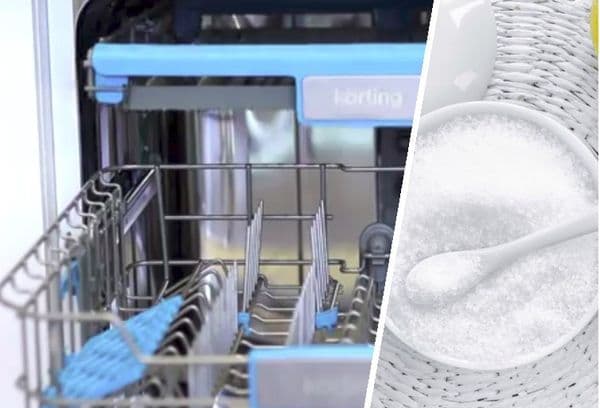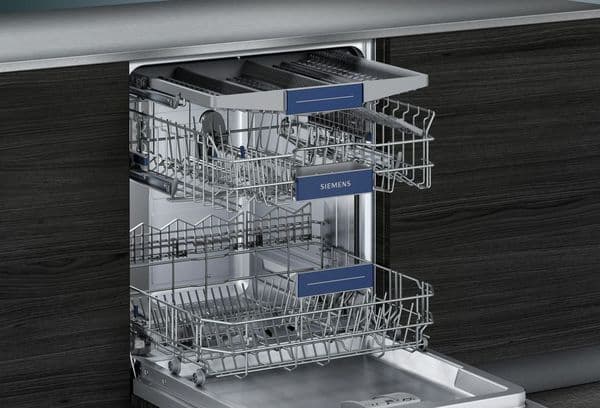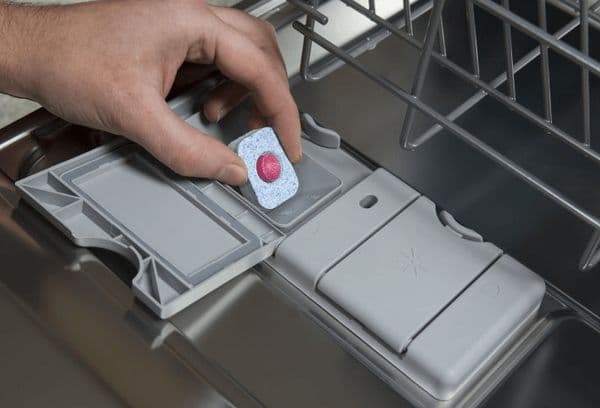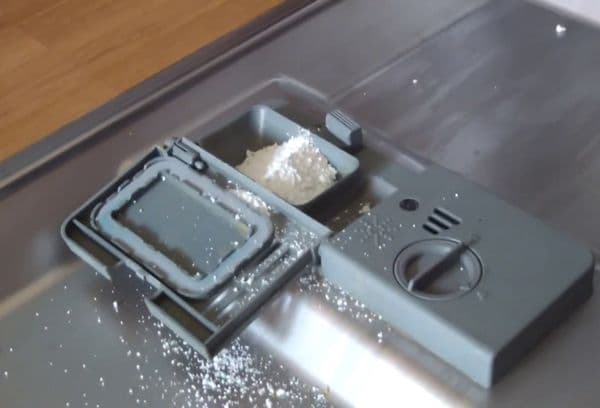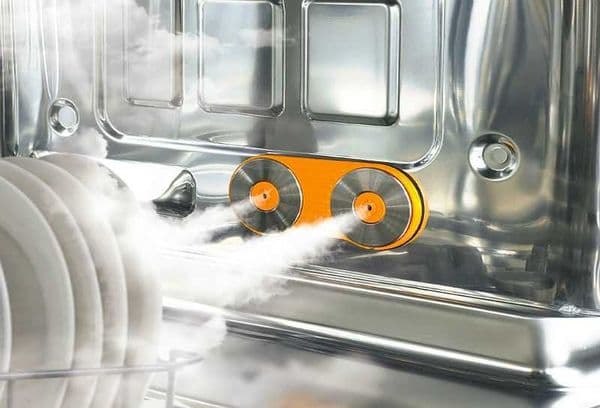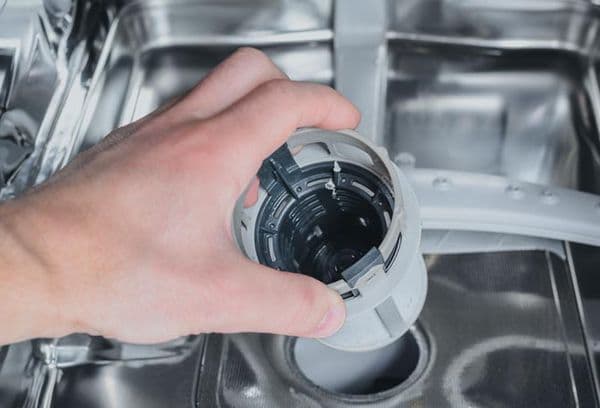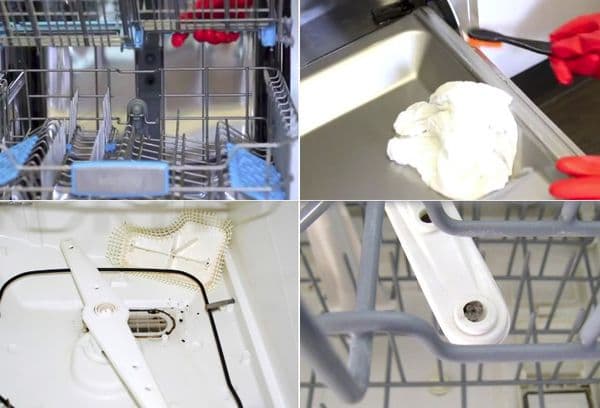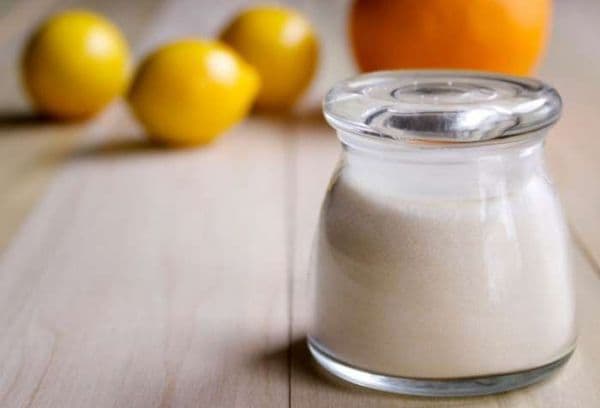Is it possible to clean the dishwasher with citric acid: pitfalls
Content:
A dishwasher frees up a lot of time and effort, but, like any appliance, it requires at least minimal maintenance. Working with water and dirty dishes, PMM is overgrown with fat, food debris, lime deposits and water stone + the remnants of tablets that are not completely dissolved. Many housewives and many masters are allowed to periodically clean the dishwasher with citric acid. It solves a number of problems, has almost no side effects, but still you need to use white crystals according to the instructions.
Where does the dirt come from and how often to clean it
It is enough to recall the siphon and the drain grate in the sink in those days when the PMM did not work in your kitchen yet. Despite the fact that water poured regularly, a detergent solution got on the walls, the sink was overgrown with grease, and the trap (net or grate) was clogged with food debris. The same thing happens in the dishwasher.
The difference is that the device’s chamber is much larger, therefore it gets dirty much slower. Nevertheless, purityis.decorexpro.com/en/ recommends cleaning the drain filter after each dishwashing - then the procedure will take no more than a minute, and the trap will always work well and will not become a hotbed of bacteria and a source of stench.
In addition to dirt, salt deposits stain the walls of the appliance. An emollient (mandatory in all regions with hard water) solves the problem only partially.
Lime deposits inevitably appear over time in narrow and poorly washed places:
- in the corners of the chamber and along the perimeter of the bottom and ceiling,
- from the inside at the ends of the watering cans,
- often - in pipes, watering cans, water supply hoses (first of all, rust from the water supply settles here).
Among other things, watering cans and feed pipes are clogged with the remains of tablets for PMM. In short cycles and in warm water, many of them do not completely dissolve, and particles gradually accumulate in an insoluble blockage.
How often to clean
If your city has medium hardness of water and softening salt in a tray in a normal volume, cleaning from lime and rust is needed every 1.5-2 months.
How to use
As with another cleaner, citric acid must be handled correctly, otherwise either there will be no effect, or parts of the dishwasher will be damaged.
Instruction:
- Turn off the machine and remove the trays - it’s more convenient to wash them in the bath by half immersing in water and using a brush or ruff.
- Clean the PMM chamber and filters from grease and waste with a sponge and regular gel for dishes.
- Collect and plug the appliance strictly without dishes, so that the salts you wash away do not get on it.
- Pour citric acid into the tablet / detergent drawer.
- Start the hourly cycle with moderately hot water.
- Turn on the sink with warm water to remove residual salts and products.
How much to put lemons
Masters advise small portions. At a flow rate of 10 liters per cycle or less, 40 g of crystals are enough, with 11-13.9 liters - 50 g. If the machine pours water over 14 l - 60 g, but in any case not more than 75 g.
How to clean watering cans
Having driven off the car with citric acid and after rinsing you will surely find something like white pebbles in the holes of the watering cans, both top and bottom - these are the remains of limestone, too large pieces to fly out with jets of water when rinsing. They need to be deleted.
purityis.decorexpro.com/en/ strongly recommends that you do not clean nozzles with toothpicks, matches or cotton buds - they will leave more debris than good. At the slightest mistake, wooden "tools" break off and remain in the watering can. In addition, neither toothpicks nor cotton buds are able to pick up and tighten the mote stuck in the watering can.
How to clean the nozzles of a watering can
Use a thin plastic crochet hook, for example 0.75-1.5 mm. In principle, a metal tool will also work, only it is necessary to act more carefully so as not to deform the plastic. If there is no necessary hook, bend it from a medium-hard wire or push a recess on an aluminum / copper stick, not more than 2 mm in diameter.
The task is as follows:
- Scroll the watering can with a light blow to make the garbage get close to the nozzles.
- Insert the hook into the hole at an angle, being careful not to expand the nozzle.
- Pull or crush debris using a hook.
- Remove dirt from the tool, for example, with a clean cloth or just with your fingers.
- Once again, click the watering can to scroll - the remaining water will fly out, dragging the crushed specks behind.
- Repeat the procedure about 3 times.
- It will not be superfluous to scroll and check the nozzles after each dishwashing - to make sure that noodles or other small pieces of food are not stuck there.
According to experience, fragments of toothpicks, food debris and even pieces of polyethylene from washing tablets are excavated in the PMM service.
The easiest way
If the device allows the watering can, remove it, disassemble, remove large debris, soak in a solution of citric acid for 20-60 minutes, and then rub it with a soft brush. Drying is not necessary, you can immediately collect and return to the dishwasher.
Camera cleaning
Citric acid quite successfully replaces many fat solvents. To wash the inner surface of the dishwasher chamber with the product, you need to prepare a concentrated solution or liquid slurry, apply to a sponge, walk along the walls, floor, ceiling and joints, remove excess with a clean damp cloth. Then - start the hourly cycle with warm water to wash off the product.
Strong and dried spots, as well as mold, are well killed by the acid + alkali reaction. Spread the crystals over the spots. Sprinkle with ordinary table soda from above. Fill the spray bottle with clean water and spray crystals and powder. Wait for the reaction to pass, then wipe with a clean, soft cloth moistened with water.
Tip
Use household gloves to protect your skin and manicure.
Is citric acid safe
Citric acid is one of the safest for both humans and the device. The main thing is to observe proportions and temperature.
How citric acid can harm:
- in too much quantity and at a water temperature close to 100 degrees, the product can harm the skin of the hands, as well as rubber and plastic parts;
- when cleaning very old layers with a concentrated hot solution, deposits are separated by pieces that clog pipes, drains, watering cans, and it is not always possible to grind these pieces.
How to avoid problems:
- Observe the dosage of crystals.
- Use hot but not boiling water (50-60 degrees).
- Carry out cleaning on time, preventing the formation of a thick layer of plaque.
- Maintain the level of emollient salt at an optimal level.
- When cleaning old deposits, take the usual concentration of citric acid and water temperature - so that the layers come off gradually, and not at once.
Benefits of Citric Acid
The advantages of the tool are much greater than the shortcomings:
- It’s environmentally friendly
- non toxic
- easy to rinse off
- effectively
- acts in a complex way, corroding stone, lime, rust, grease, dirt and partially disinfecting,
- cheap,
- available
- leaves a pleasant fresh aroma
- It does not cause allergies and does not harm PMM in moderate concentrations.
All this makes citric acid an excellent choice for regular cleaning of both the walls of the chamber and the inside of the machine.Take care of the device regularly, and it will not lose its effectiveness, and its life will be noticeably longer.
